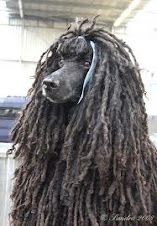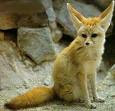 Chinese Shar-Pei are the beauties of rare dogs. They can be so irresistible! Black, blue, or that yellowish color, this Chinese dog is always what you would expect it to be. But the history of the breed is a little more devastating.
Chinese Shar-Pei are the beauties of rare dogs. They can be so irresistible! Black, blue, or that yellowish color, this Chinese dog is always what you would expect it to be. But the history of the breed is a little more devastating.Originating in China, the Shar-Pei was originally a farm, guard, and possibly even dog-fighting breed. Overtime, though, Shar-Pei became less popular in China, sadly. And they required reviving. And then, that started to happen, and people who wanted to save the Shar-Pei went to work, and the breed's popularity grew again. But even today, this is a pretty rare breed. So if you see one, you are actually very lucky.
If you had seen a Shar-Pei, you definitely would've probably been surprised by the breed's looks. The most well-known trait of the Shar-Pei would have to be the coat, which is very soft and fluffy. You see, the words "Shar-Pei," mean "Sand Skin." And that is right. Not only is the coat fluffy, but wrinkly. VERY wrinkly. The wrinkles help to keep the Chinese Shar-Pei's internal organs safe when they would possibly dog fight. So if there's a dog fight with the Shar-Pei, not much damage would probably be easily inflicted to the Shar-Pei! Another trait the Shar-Pei is well-known for is his reputation. Shar-Pei may be irresistible by looks, but these are very territorial breeds, so they make great guarders. Remember because of this, you should tread with caution when first meeting a Shar-Pei. That brings us to the considerations for the Shar-Pei.
This typically independent breed can be stubborn, and therefore require experienced dog owners. The breed just needs a lot of work. Vet bills with the Shar-Pei can be high with the Shar-Pei. The structure of the breed means they have many health issues. But grooming is another concern. The wrinkles must be cleaned thoroughly, and you could bathe them regularly to help. But actually, you don't need to do much besides that. The breed fairs best with adults, but children below the age of 8 should be out of the question. So this is a one-man dog. But if you are the right fit for a Shar-Pei, you may never regret the adoption of a Shar-Pei. Shar-Pei RULE!!!











